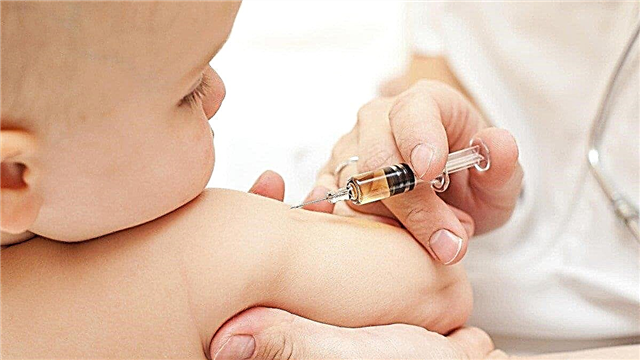
Inflammation of the gums, which is called gingivitis in medicine, is very common in childhood. It is quite easily diagnosed in the acute stage because of the pronounced clinical picture, and chronic gingivitis is often detected during regular examinations at the dentist. Any form of gingivitis in a child requires treatment, since the disease causes discomfort and can lead to serious problems with the oral cavity.
When teething in a child, the mucous membrane of the gums is damaged and aseptic (ie, "microbial") inflammation occurs, which causes fever, diarrhea, sleep disturbance and baby's appetite. At the same time, as a result of damage to the gums, they become more vulnerable to infection and the occurrence of septic (ie, "microbial") inflammation, which can complicate the already difficult period of teething. Conventional drugs for treating inflammation of the oral mucosa are not always convenient for children. You should choose a drug intended for use in children. For example, Holisal®... When applied topically, it has a triple effect of helping relieve pain and inflammation, and targeting viruses, fungi and bacteria. The adhesive gel base helps to retain the active substances on the mucous membrane, prolonging their action¹. It is important to be careful when using in children under one year old and consult a doctor first.

What is it
Gingivitis is a disease in which the gum tissue adjacent to the teeth is affected. Most often, such inflammation occurs in children over five years old, especially in adolescence, but in 2% of cases, gingivitis can also affect children younger, for example, at the age of 2 or 3 years.

Causes
The appearance of gum disease in a child is due to:
- Poor oral care, for example, if the child does not clean the teeth thoroughly enough or forgets to brush them. It is the main cause of gum disease in childhood.
- Traumain which the lining of the gums is damaged, causing cuts, burns, or scratches. Especially often, trauma to the gums occurs during the eruption of milk teeth, when the baby is trying to eliminate the itching and gnaw on various objects.
- Cariesaffecting milk teeth at 1 year or older, as well as caries on permanent teeth.
- Malocclusion or abnormalities of the lips or frenum of the tongue, interfering with chewing.
- Molar eruptionif the child avoids pain and does not clean the problem area well enough.
- Poor fillings or the use of orthodontic appliances.
- Impaired nasal breathing as a result of which the child breathes through the mouth and the mucous membrane dries up.

The provoking factors that contribute to the weakening of local immunity and the occurrence of gingivitis are called:
- Infectious diseases.
- Allergy.
- Lack of vitamins in food.
- Diseases of the digestive tract (gallbladder, intestines).
- Diseases of the blood.
- Rheumatism.
- Diabetes.
- Tuberculosis.
- Hormonal dysfunction.
- Disruption of metabolic processes.
- Kidney disease.
- Dysbacteriosis.
- Lack of saliva (this condition is called xerostomia).
- Too hard toothbrush.
- Irradiation.

Types and forms
Given the changes in the gums, gingivitis is divided into:
- Catarrhal... This is the most common type of gum disease in children.
- Ulcerative... With this form, ulcerative lesions form on the gums of the child, and when the condition worsens, areas of necrosis appear on them.
- Atrophic... With this kind of gingivitis, the volume of the gum tissue decreases.
- Hypertrophic... It appears as a result of chronic inflammation and is an overgrowth of gum tissue and their deformation.
Depending on the course, the disease is acute, which is manifested by severe symptoms, and chronicwhen the inflammatory process is weak, and pain is practically absent.
By its localization, gingivitis can be local if a small area between adjacent teeth is affected, as well as generalized if most of the gums are inflamed.
As for the severity, gingivitis is:
- Easy - with this form, only the interdental papilla is affected.
- Medium severity - the marginal part of the gums is affected.
- Heavy - inflammation covers not only the marginal, but also the alveolar part.
Symptoms
With any form of gingivitis, the gums at the site of inflammation will be swollen and reddened, and plaque will be present on the teeth. Also, almost always a symptom of such a disease is bleeding of the gums due to mechanical stress, for example, while brushing teeth or eating meals. Other signs of the disease depend on the stage of the gingivitis.
Catarrhal gingivitis is manifested by:
- Feeling of itching and discomfort in the gums.
- Distortion of taste.
- Unpleasant odor from the mouth.
- Painful sensations with chemical or thermal exposure.
- A slight increase in temperature during the acute period.
Ulcerative gingivitis in addition to the signs inherent in catarrhal, it is characterized by general intoxication, manifested by reduced appetite, poor sleep, malaise and moods.
The gums in this form of the disease are red with a slight cyanosis. In addition, looseness and thickening of the mucous membrane, as well as foci of erosion, are revealed at the site of the lesion.
With an unfavorable course, such gingivitis becomes ulcerative-necrotic and manifests itself:
- Increased viscosity of saliva.
- The appearance of the smell of rot from the oral cavity.
- The formation of ulcers, on which there is a greenish-gray coating.
- Swollen lymph nodes in the jaw.
With atrophic gingivitis, there will be no pronounced pain sensations. The child's gums will react to temperature stimuli, and upon examination, the doctor will notice dystrophic changes and bare tooth necks on their surface.
If gingivitis becomes hypertrophic, then this is manifested:
- Complaints of the child about itching and pain in the gums.
- Bleeding of the gums while eating.
- Chewing problems.
- Loose gum papillae.
- False gum pockets.
- Overgrowth of gum tissue.
- Abundant plaque on the teeth.
Possible complications
If you do not start treating gingivitis on time, the risk increases:
- Development of periodontitis.
- Infection in the jaw bones.
- Development of a necrotic form of gingivitis.
- Loose teeth and premature loss.
- The infection gets into the bloodstream, and through it - to the heart and kidneys.

What to do
If the baby's gums become inflamed and the temperature rises, the best solution is to see a doctor. Detecting gingivitis is easy enough through a routine examination. The dentist will determine the stage of the disease and decide what kind of therapy is required if the child has gum disease.
If gingivitis is caused by bacteria, it is required to treat the gums with antiseptics, agents to reduce the inflammatory process, as well as antibacterial drugs. If the disease was provoked by infections or somatic diseases that caused a decrease in immunity, it is important to pay attention to their treatment.
We also note that one should not independently treat gingivitis in a child at home, using only folk remedies. Traditional recipes have proven themselves well only as an auxiliary therapy.... First, the child should be examined by a doctor and prescribed the most effective and safest medicines, after which the child will forget about gingivitis, pain and bleeding of the gums.

Treatment
With gingivitis, children are prescribed:
- Cleaning teeth from deposits. Before you begin treating gum disease, it is important to remove all plaque at the dental clinic. For this purpose, the doctor uses ultrasound and polishing brushes. The procedure is completely painless and easily tolerated by children. If there are sores with plaque on the gums that are very painful, the doctor will first anesthetize the gums, then carefully remove the necrotic tissue, and then he will deal with the elimination of deposits on the teeth. After cleaning, the dentist will recommend toothpaste, tell you how to choose the right brush, and teach your child how to clean their teeth correctly.
- Anti-inflammatory therapy. It includes rinsing with a solution of chlorhexidine, miramistin, furacilin, rotocan, herbal infusion (sage, chamomile and others) and other antiseptics. Also, a gel or ointment may be prescribed to a child to reduce inflammation, such as Metrogyl Denta, Bobodent, Kamistad, Dentinox, Gingivitis Gel, or Cholisal. In this case, the gums are treated with the gel after rinsing, and many of them have an analgesic effect. In order for the gum epithelium to recover faster, the child will be prescribed treatment with sea buckthorn oil, solcoseryl, vitamin E solution and other preparations with a keratoplastic effect.
- Sanitation of the oral cavity. If the child has dental diseases, it is important to heal the carious areas and place fillings, remove extra teeth (if necessary) and correct the bite.

Prevention
To prevent the appearance of gingivitis in a child, you should:
- Do not miss preventive examinations at the dentist, which should be carried out 1-2 times a year.
- Teach your child to clean their teeth properly twice a day using baby paste.
- Monitor the regimen and diet of babies, limiting simple carbohydrates and sweets.
- Choose an age-appropriate soft toothbrush for your child, to prevent mechanical damage to the gums when cleaning.

1. Instructions for the medical use of the medicine Cholisal®
There are contraindications. It is necessary to read the instructions or consult a specialist.



